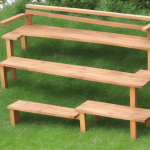Selecting the right performance camshaft for your desired power curve requires a deft understanding of engine dynamics and how various factors affect your car’s performance. The camshaft, colloquially known as the "cam," is a critical component in an engine’s operation. With the right cam, you can lift your engine’s performance, delivering the power you need at your desired RPM. This article will provide an in-depth guide on how to select the perfect camshaft to power your engine and boost your car’s performance.
Understanding Camshafts and Their Role in Engine Performance
Before diving deep into the selection process, it’s crucial to understand what a camshaft is and its role in an engine. A camshaft is a rotating cylinder fitted with ‘lobes’ or ‘cams,’ which open and close the intake and exhaust valves in sync with the engine’s crankshaft. Its job is to control the timing, amount, and duration of the valves opening.
Lire également : How to Properly Balance Increased Horsepower with Adequate Braking Power for Safety?
The cam’s profile, including its lift, duration, and the angle between the intake and exhaust lobes (called lobe separation angle), has a significant effect on how the engine performs. The lift refers to how much the cam opens the valve, while the duration measures how long the valve stays open. The lobe separation angle affects the engine’s torque and responsiveness.
How the Camshaft Affects Power and RPM
The camshaft’s design directly influences the engine’s power output and the RPM at which that power is delivered. The engine power is determined by the amount of air/fuel mixture the engine can take in and burn – the more air/fuel mixture, the more power. Your camshaft plays a significant role in controlling this flow.
A découvrir également : What’s the Best Approach to Installing an Aftermarket Turbo Timer for Engine Longevity?
Camshafts with high lift and long duration will allow more air/fuel mixture into the cylinders, increasing the engine’s power output. However, this usually happens at higher RPMs, making such cams suitable for race engines that operate at high RPMs.
Conversely, cams with lower lift and shorter duration will deliver power at lower RPMs. They don’t allow as much air/fuel mixture into the cylinders but do so more frequently. This makes them more suitable for street engines that operate at lower RPMs.
Choosing the Right Camshaft for Your Power Curve
Selecting the right camshaft for your desired power curve involves several considerations. You need to balance your need for power, the RPM at which you want this power, your car’s other components, and the intended use of your car – whether racing, street driving, or towing.
Camshafts come in a range of profiles – "stock," "street performance," "race," and others. Stock cams are typically designed for general purposes, providing decent power and fuel efficiency at low to mid RPMs. Street performance cams offer more power but at higher RPMs, while race cams deliver the highest power but only at high RPMs.
The best way to select a camshaft is to get a quote from a reputable camshaft manufacturer or distributor. They can provide a cam that suits your specific engine setup and goals.
Understanding Camshaft Specs and Terms
To choose the right camshaft, you need to understand the various specs and terms associated with them. These include terms like lift, duration, lobe separation angle, and overlap.
As we’ve covered, the lift and duration affect how much and for how long the valves open. The lobe separation angle, measured in degrees, affects the engine’s torque and responsiveness. Overlap refers to the time when both the intake and exhaust valves are open simultaneously, which affects the engine’s power and efficiency, particularly at low RPMs.
By understanding these specs and terms, you can select a camshaft that provides the power you need at the RPM you want. For instance, if you want more power at high RPM, you may opt for a cam with high lift, long duration, and a wide lobe separation angle.
The choice of camshaft can make or break your engine’s performance. Understanding its role, how it affects power and RPM, and the factors to consider when selecting one can help you make an informed decision. Remember, the right cam can lift your engine’s performance and deliver the power you desire, when you desire it.
Understanding the Impact of Camshafts on Emissions and Overlap
In your quest to select the right performance camshaft for your car, it’s equally important to consider its potential impact on your vehicle’s emissions and overlap. This is particularly significant if your vehicle is required to meet specific emission standards.
Overlap refers to a period during the engine’s cycle when both the intake and exhaust valves are open simultaneously. This occurs at the end of the exhaust stroke and the beginning of the intake stroke. The amount of overlap is determined by the camshaft’s design, specifically the lobe separation angle and the duration of the lift.
A camshaft with high overlap can enhance the engine’s power output, particularly at higher RPMs. However, it can also negatively affect the engine’s idle characteristics and its ability to pass emissions tests. High overlap can result in a rough idle and higher emissions because some of the air/fuel mixture can escape into the exhaust without being burned.
On the other hand, camshafts with low overlap result in smoother idle characteristics and are more likely to be capable of passing emissions tests. They might not offer the extreme power boosts of their high overlap counterparts but are more suitable for daily street driving.
Learned terms such as overlap degrees, idle characteristics, and the need for passing emissions can significantly guide your choice of camshaft. If you’re looking for a high-performance race engine that will primarily operate at high RPM, you might opt for a camshaft with high overlap. But if you’re looking for a street vehicle that operates at lower RPMs and needs to meet emission standards, a low-overlap camshaft may be a better choice.
Conclusion: Selecting the Perfect Performance Camshaft
In conclusion, to choose the right performance camshaft for your desired power curve, you need to understand the workings of the camshaft and how its varying specifications such as lift, duration, and lobe separation angle (LSA) influence your engine’s performance. Furthermore, you should consider your car’s mission, whether it’s racing, street driving, or towing, and select a camshaft accordingly.
Also, it’s crucial to note the role of overlap and its effect on your engine’s idle characteristics and emissions. This consideration becomes particularly important when your vehicle is required to meet certain emission standards.
Finally, remember that the choice of camshaft can significantly lift your engine’s performance. With the right selection, you can ensure that your car delivers the power you need when you need it. Furthermore, don’t hesitate to get a quote originally from a reputable camshaft manufacturer or distributor. They can provide a cam that suits your specific engine setup, RPM range, and power curve.
Your camshaft is more than just a component; it’s the heart of your engine’s performance. Being well-informed about its functions and features, you can make a wise decision that will enhance your drive and help you enjoy the ride.










